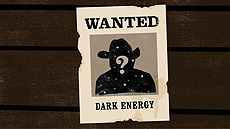What is dark energy?
 |
It's everywhere. It will determine the fate of our universe. And we still have no idea what it is. Image: Sandbox Studio |
Looking up at the night sky reveals a small piece of the cosmos — patches of stars speckled across a dark, black void. Though the universe appears stationary to the naked eye, it is expanding at an increasing rate, with the distance between galaxies doubling every 10 billion years. Scientists attribute this phenomenon to dark energy, which makes up 70 percent of our universe — and will determine its eventual fate.
A changing universe
In the early 1900s, when Albert Einstein formulated the theory of general relativity, scientists believed in a static universe. This posed a problem for Einstein. According to his calculations, space was dynamic — either contracting or expanding. To resolve this discrepancy in his equations, he added the cosmological constant, a factor to counter the force of gravity. But when news broke that the universe was expanding, Einstein dropped the term, reportedly calling it his biggest blunder.
Fast-forward to 1998. Scientists observing supernovae, the extremely bright, explosive deaths of stars, made an unexpected discovery. By comparing the observed to expected brightness of these explosions, they found that the universe's expansion was accelerating.
Why this was happening was a mystery. Michael Turner, a theoretical cosmologist at the University of Chicago, coined the term "dark energy" to describe the unknown cause of this accelerating expansion.
For almost two decades, physicists have been developing theories about what dark energy could be. Some propose dark energy is static, others say it changes over time. Some even suggest that it might not exist.
"We're at the very beginning of a very profound puzzle," Turner says.
Read more
—Diana Kwon
|